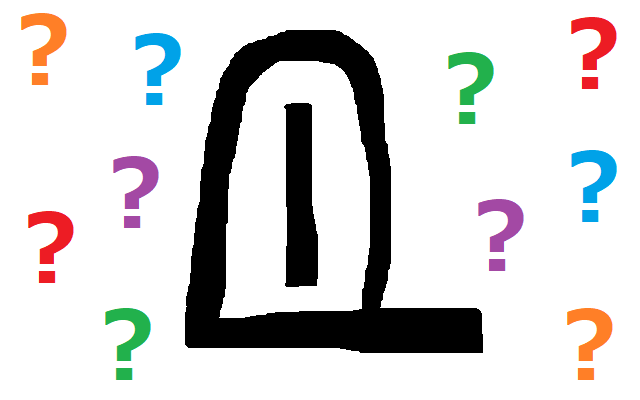
It’s not for labeling popsicle stands, or caves, or tongues, or…
If you’ve never taken a look at a Japanese map before, then you may not know that they use some different symbols compared to the rest of the world.
For example, here’s a screenshot from Google Maps showing a part of Mitaka Ward in Tokyo:
▼ You can see the 〒 symbol for the post office, the 文 symbol for schools, the ◎ symbol
for the city office, and the Y-like symbol in the bottom right for the fire station.
Of course the details of the symbols go much deeper than that. There are dozens and dozens of symbols for different types of buildings and areas.
▼ Here’s a small sampling of just 24 common ones.
(Translation below)
13年ぶりに新しい地図記号が追加! お前らこれ何を表す記号か、わかる? https://t.co/1wkeq2uvqR pic.twitter.com/cAkazBURuc
— Almz presents trend (@AlmzTrend) March 16, 2019
Top row: (1) City hall, (2) Town/village hall, (3) Gov. office, (4) Elementary/middle school, (5) High school, (6) Post office, (7) Court, (8) Fire station
Middle row: (1) Hospital, (2) Buddhist temple, (3) Shrine, (4) Power plant, (5) Factory, (6) Police, (7) Three-way intersection, (8) Benchmark
Bottom row: (1) Mulberry field, (2) Wasteland, (3) Broad-leaf forest, (4) Coniferous forest, (5) Rice field, (6) Cultivated land, (7) Orchard, (8) Tea field
With just a quick glance at those symbols, one of them may jump out at you: the symbol for Buddhist temples, the manji. It has an unfortunate resemblance to the swastika, something that has been controversial in the past and whose change has been advocated for, but is still in regular use.
Despite already having a ton of map symbols, Japan has been adding a steady stream of new ones over the past decades, though it seemed as though they’d finally hit a stopping point.
The last two new symbols were added in 2006, thirteen years ago.
▼ They were the symbol for windmill, which is kind of cool…
— 地図記号BOT (@Mapsymbol) March 15, 2019
▼ …and the symbol for retirement home, which is not only hilarious with its
cane inside a house, but it being symbolic of modern Japan too.
老人ホーム pic.twitter.com/jVuHjldFbm
— 地図記号BOT (@Mapsymbol) March 15, 2019
But on the 15th of this month, the Japanese Geographical Survey Institute announced that they would be adding a new symbol to maps.
Here’s a glimpse of what the symbol looks like. Can you guess what what it means?
▼ Scroll down for some hints and then the answer!
https://twitter.com/reisikirem/status/1106706879672020992
.
.
.
.
.
.
.
.
.
.
▼ Hint #1: It’s not a symbol for portals to other dimensions, sorry.
.
.
.
.
.
.
.
.
.
.
▼ Hint #2: It’s marking a single, usually somewhat small, thing.
Not a building or an area.
.
.
.
.
.
.
.
.
.
.
▼ Final hint: It may look a little something like this.
.
.
.
.
.
.
.
.
.
.
▼ Answer: It’s a symbol to mark memorial stones honoring victims of natural disasters.
花見川(千葉市)沿いにある「水難之碑」。結構あちこちにあるけど自然災害伝承碑じゃないのが多いんだ。工事で亡くなった方の慰霊碑。謂れ因縁わからない碑が結構おおいよのね。#地図記号 #自然災害伝承碑 pic.twitter.com/4dbPq5SKtH
— 🐈ひろこば🐈히로코바 (@horse_sheep) March 15, 2019
Did you guess right? Were you even close? No worries if you weren’t. Here’s what Japanese netizens guessed when they first saw the symbol:
“Metal detector.”
“A mail box.”
“Vending machines.”
“I figured maybe a charge spot for electric cars. I was wrong.”
“I thought it was for a public restroom… but we already have a symbol for that.”
“Is it for monoliths?”
That last guess isn’t bad, but the rest make my personal guess of “hot potato vendor” sound reasonable.
▼ Some also pointed out that the symbol bears a striking resemblance to Game Freak’s logo.
新しい地図記号ゲームフリークで草 pic.twitter.com/fggQQixR9c
— MaRiz🥕🐹🦄 (@SSR_MaRi_ow) March 16, 2019
After the huge floods in western Japan last year, there were more stone memorials to the victims put up than in the past hundred years, and the Japanese Geographical Survey Institute wanted their locations to be more known. The symbol for the memorials will start going up online starting June this year, and in print maps starting in September.
Marking the memorials on maps is a nice gesture to the municipalities that put them up. Now if we could just get them to add in a symbol for memorials to otaku-penguins….
Source: Nikkei via My Game News Flash
Images: SoraNews24
● Want to hear about SoraNews24’s latest articles as soon as they’re published? Follow us on Facebook and Twitter!

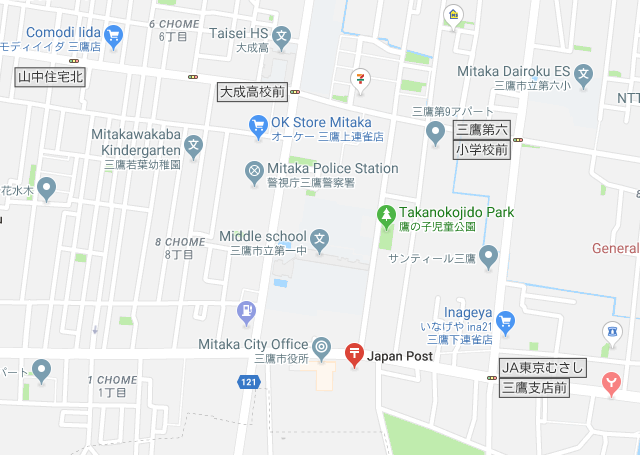
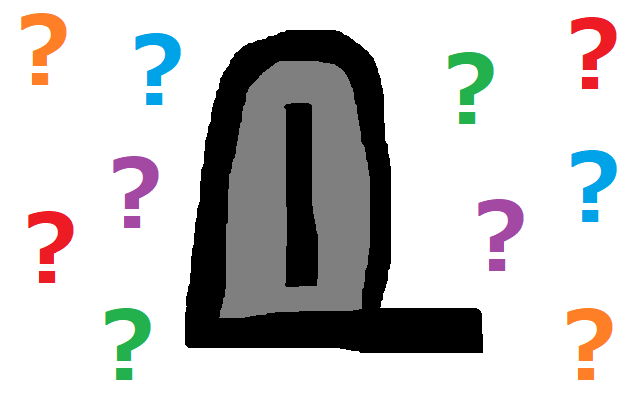
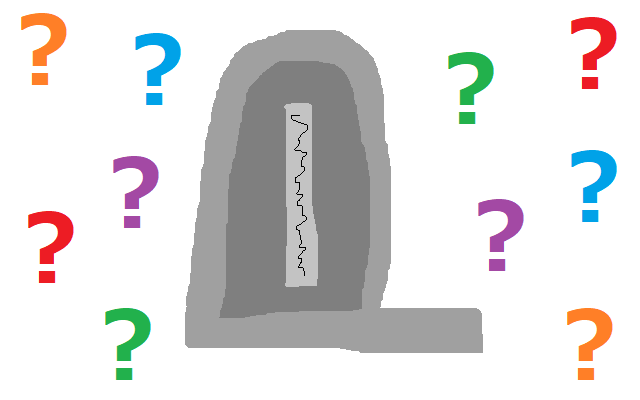
 The top 10 universities in Japan determined by 2021 World University Rankings
The top 10 universities in Japan determined by 2021 World University Rankings Emperors, anime icons, and porn stars show up in six-nation survey of most famous Japanese people
Emperors, anime icons, and porn stars show up in six-nation survey of most famous Japanese people Japanese government recommends changing Buddhist temple mark on maps to avoid Nazi connotations
Japanese government recommends changing Buddhist temple mark on maps to avoid Nazi connotations Häagen-Dazs Japan gives us another Crispy Sandwich flavor to swoon over: roasted green tea
Häagen-Dazs Japan gives us another Crispy Sandwich flavor to swoon over: roasted green tea Japan’s government reconsiders plan to change country’s iconic hot spring symbol after backlash
Japan’s government reconsiders plan to change country’s iconic hot spring symbol after backlash Foreigner’s request for help in Tokyo makes us sad for the state of society
Foreigner’s request for help in Tokyo makes us sad for the state of society Mikado Coffee is a 76-year-old coffee chain with a major celebrity connection
Mikado Coffee is a 76-year-old coffee chain with a major celebrity connection Japan’s summertime towelket pillowcases are even better with the addition of Ghibli stars【Photos】
Japan’s summertime towelket pillowcases are even better with the addition of Ghibli stars【Photos】 Seaside scenery, history, and so many desserts on Yokohama’s Akai Kutsu【Japan Loop Buses】
Seaside scenery, history, and so many desserts on Yokohama’s Akai Kutsu【Japan Loop Buses】 Ghibli Park now selling “Grilled Frogs” from food cart in Valley of Witches
Ghibli Park now selling “Grilled Frogs” from food cart in Valley of Witches Japanese city loses residents’ personal data, which was on paper being transported on a windy day
Japanese city loses residents’ personal data, which was on paper being transported on a windy day Osaka governor suggests lowering voting age to 0 to curb population decline
Osaka governor suggests lowering voting age to 0 to curb population decline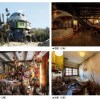 Ghibli Park opens final area to first visitors, with stunning new attractions and shops 【Videos】
Ghibli Park opens final area to first visitors, with stunning new attractions and shops 【Videos】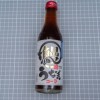 Our Japanese-language reporter tries eel cola so you don’t have to 【Taste Test】
Our Japanese-language reporter tries eel cola so you don’t have to 【Taste Test】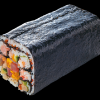 The greatest sushi roll in Japanese history is actually nine sushi rolls in one【Photos】
The greatest sushi roll in Japanese history is actually nine sushi rolls in one【Photos】 McDonald’s new Happy Meals offer up cute and practical Sanrio lifestyle goods
McDonald’s new Happy Meals offer up cute and practical Sanrio lifestyle goods Japanese ramen restaurants under pressure from new yen banknotes
Japanese ramen restaurants under pressure from new yen banknotes French Fries Bread in Tokyo’s Shibuya becomes a hit on social media
French Fries Bread in Tokyo’s Shibuya becomes a hit on social media Red light district sushi restaurant in Tokyo shows us just how wrong we were about it
Red light district sushi restaurant in Tokyo shows us just how wrong we were about it New private rooms on Tokaido Shinkansen change the way we travel from Tokyo to Kyoto
New private rooms on Tokaido Shinkansen change the way we travel from Tokyo to Kyoto Tokyo Tsukiji fish market site to be redeveloped with 50,000-seat stadium, hotel, shopping center
Tokyo Tsukiji fish market site to be redeveloped with 50,000-seat stadium, hotel, shopping center Beautiful Ghibli sealing wax kits let you create accessories and elegant letter decorations【Pics】
Beautiful Ghibli sealing wax kits let you create accessories and elegant letter decorations【Pics】 Secret Kitchen bento serves Japanese flowers, birds, wind and moon in a box, but is it worth it?
Secret Kitchen bento serves Japanese flowers, birds, wind and moon in a box, but is it worth it? New definition of “Japanese whiskey” goes into effect to prevent fakes from fooling overseas buyers
New definition of “Japanese whiskey” goes into effect to prevent fakes from fooling overseas buyers Our Japanese reporter visits Costco in the U.S., finds super American and very Japanese things
Our Japanese reporter visits Costco in the U.S., finds super American and very Japanese things Studio Ghibli releases Kiki’s Delivery Service chocolate cake pouches in Japan
Studio Ghibli releases Kiki’s Delivery Service chocolate cake pouches in Japan All-you-can-drink Starbucks and amazing views part of Tokyo’s new 170 meter-high sky lounge
All-you-can-drink Starbucks and amazing views part of Tokyo’s new 170 meter-high sky lounge More foreign tourists than ever before in history visited Japan last month
More foreign tourists than ever before in history visited Japan last month New Pokémon cakes let you eat your way through Pikachu and all the Eevee evolutions
New Pokémon cakes let you eat your way through Pikachu and all the Eevee evolutions Disney princesses get official manga makeovers for Manga Princess Cafe opening in Tokyo
Disney princesses get official manga makeovers for Manga Princess Cafe opening in Tokyo Sales of Japan’s most convenient train ticket/shopping payment cards suspended indefinitely
Sales of Japan’s most convenient train ticket/shopping payment cards suspended indefinitely Sold-out Studio Ghibli desktop humidifiers are back so Totoro can help you through the dry season
Sold-out Studio Ghibli desktop humidifiers are back so Totoro can help you through the dry season Japanese government to make first change to romanization spelling rules since the 1950s
Japanese government to make first change to romanization spelling rules since the 1950s Ghibli founders Toshio Suzuki and Hayao Miyazaki contribute to Japanese whisky Totoro label design
Ghibli founders Toshio Suzuki and Hayao Miyazaki contribute to Japanese whisky Totoro label design Doraemon found buried at sea as scene from 1993 anime becomes real life【Photos】
Doraemon found buried at sea as scene from 1993 anime becomes real life【Photos】 Tokyo’s most famous Starbucks is closed
Tokyo’s most famous Starbucks is closed One Piece characters’ nationalities revealed, but fans have mixed opinions
One Piece characters’ nationalities revealed, but fans have mixed opinions We asked a Uniqlo employee what four things we should buy and their suggestions didn’t disappoint
We asked a Uniqlo employee what four things we should buy and their suggestions didn’t disappoint Disney Girls turned into beautiful bite-sized cakes with sweet collection from Cozy Corner!
Disney Girls turned into beautiful bite-sized cakes with sweet collection from Cozy Corner! 17 new designs unveiled in round two of regional Japanese license plates
17 new designs unveiled in round two of regional Japanese license plates Junior high student leaves us laughing after mistaking traditional pattern for Wi-Fi symbol
Junior high student leaves us laughing after mistaking traditional pattern for Wi-Fi symbol Poo emoji hand signals go viral on Japanese Twitter
Poo emoji hand signals go viral on Japanese Twitter Fans farewell Akihabara’s iconic Sega building as anime poster removal begins
Fans farewell Akihabara’s iconic Sega building as anime poster removal begins Tokyo Tower, Skytree don French Tricolour in show of sympathy following Paris terrorist attack
Tokyo Tower, Skytree don French Tricolour in show of sympathy following Paris terrorist attack Why not celebrate your graduation with a cool boat trip to the world’s biggest tidal whirlpools?
Why not celebrate your graduation with a cool boat trip to the world’s biggest tidal whirlpools? Travel through time with these old maps from the Zenrin Virtual Museum
Travel through time with these old maps from the Zenrin Virtual Museum Updates on Nintendo’s revolutionary Pokémon Go: Gyms, teams, location-specific Pokémon and more
Updates on Nintendo’s revolutionary Pokémon Go: Gyms, teams, location-specific Pokémon and more Cherry blossom forecast 2018: Sakura expected to come to Tokyo earlier than usual this year!
Cherry blossom forecast 2018: Sakura expected to come to Tokyo earlier than usual this year! Starbucks x Snoopy collection debuts in Japan!
Starbucks x Snoopy collection debuts in Japan! Test your knowledge of Japanese convenience stores with this katakana puzzle
Test your knowledge of Japanese convenience stores with this katakana puzzle Ridiculously awesome cherry blossom bar with sakura pool opening in Tokyo【Photos】
Ridiculously awesome cherry blossom bar with sakura pool opening in Tokyo【Photos】 You can enjoy traditional Japanese New Year’s osechi eats on a budget with Lawson Store 100
You can enjoy traditional Japanese New Year’s osechi eats on a budget with Lawson Store 100 Celebrate the Hinamatsuri Festival in sweet style with treats from Cozy Corner!
Celebrate the Hinamatsuri Festival in sweet style with treats from Cozy Corner!
Leave a Reply